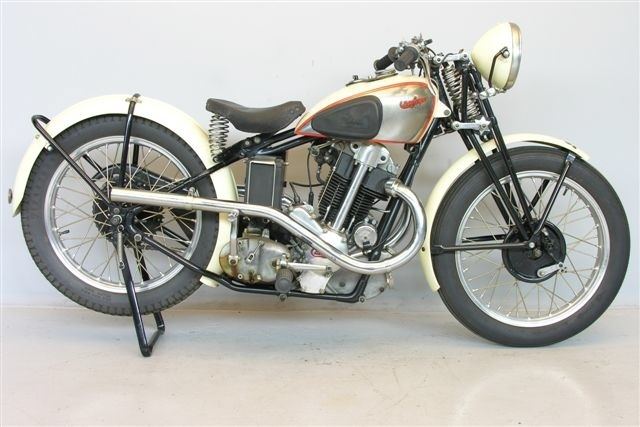 | ||
The Calthorpe Motor Company based in Bordesley Green, Birmingham, England made a range of cars, motorcycles and bicycles from 1904 to 1932.
Contents
Formation
The company started out in the 1890s as a Birmingham bicycle maker called Hands and Cake run by George W. Hands. This was renamed the Bard Cycle Manufacturing Company in 1897 changing to the Minstrel Cycle Company in 1901.
Car production
In 1904, the first motor car, a 10 hp four-cylinder model, was announced. They briefly made some larger types, but it was in the light car field that they specialised, using proprietary White and Poppe engines. The cars were successfully raced in France in the Coupe de l'Auto series. A small car was announced in 1913 for the 1914 season with the 10 hp Minor, which proved to be a real large car in miniature, with a 3-speed gearbox and shaft drive.
After the war the large cars were dropped, but the Minor re-appeared with a slightly larger engine of 1261 cc. In 1920 a Mr J Mathews was in charge of production, and a target of making 50 cars a week was set. The cars continued to have excellent coachwork made by the Calthorpe subsidiary company of Mulliner (acquired in 1917), who had an adjacent factory. Sporting activity continued with Woolf Barnato, amongst others, racing at Brooklands. George Hands briefly left the company in 1922 to set up his own Hands make of cars in the Calthorpe motorcycle factory in Barn Street, Birmingham but returned in 1924. Whilst away he developed the six-cylinder overhead-camshaft engine that was fitted for a short time to the 12/20. The Hands cars seem to have used Dorman engines.
The days of the high-quality light car were coming to an end by the late 1920s, and sales of the fairly expensive Calthorpe were declining. A receiver had to be appointed in 1924, and the Bordesley Green factory closed, but very limited production kept going for a while. A final fling with the 1925 15/45 six-cylinder 2-litre car was really too late, and sales of the remaining stocks of cars had virtually ceased by 1928.
About 5,000 cars were made in the post-war period; pre-war production is uncertain. Fewer than ten cars are thought to have survived.
Calthorpe motorcycles
The Minstrel Cycle Company became the Minstrel & Rea Cycle Company in 1905 and started making motorcycles in 1909. The company name changed again to the Calthorpe Motor Cycle Company, and production continued until 1938.
In the late 1920s, the company launched a new range under the sub-brand of Ivory Calthorpe. Using a self-produced single-cylinder sloper-design engine, the engine was similar in proportions and output to contemporary BSA units. The ohv twin-port 348cc launch unit was fitted into a full-cradle duplex frame, and used a 3-speed Burman gearbox, with a tank mounted change. The engine breathed through an AMAL carb, and used a BTH magneto mounted to the rear of the cylinder. By 1935 there was a 498cc option, but top speeds were similar at around 70 miles per hour (110 km/h). The design was sit-in as opposed to traditional bicycle sit-on design, later described by one tester as a "sack-of-potatoes slump!" With a marketing unit by no sales team, the motorcycles were exclusively sold by London-based dealer Pride & Clark in Stockwell Road, Brixton. P&C stated that the units should be sold at £52 and £54 respectively - a relatively high pricing for the time, but one which left a slim margin for Calthorpe MCC.
When the receiver sold the works in 1939, Bruce Douglas, the nephew of the founder of Douglas, bought the Calthorpe equipment and moved it to Bristol. He built new models powered by 347cc and 497cc Matchless engines, but only a few were built before production was stopped by the outbreak of World War II. Production did not recommence after the end of the war, and the equipment was sold to DMW.
